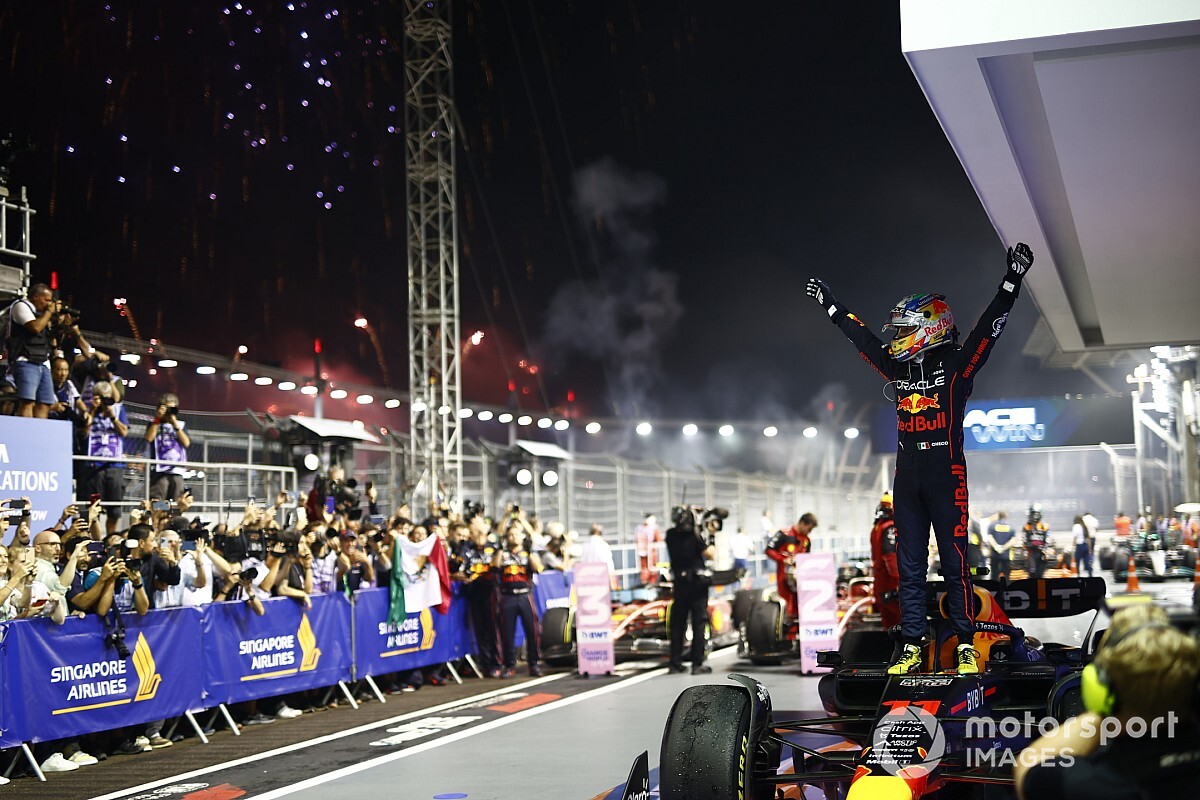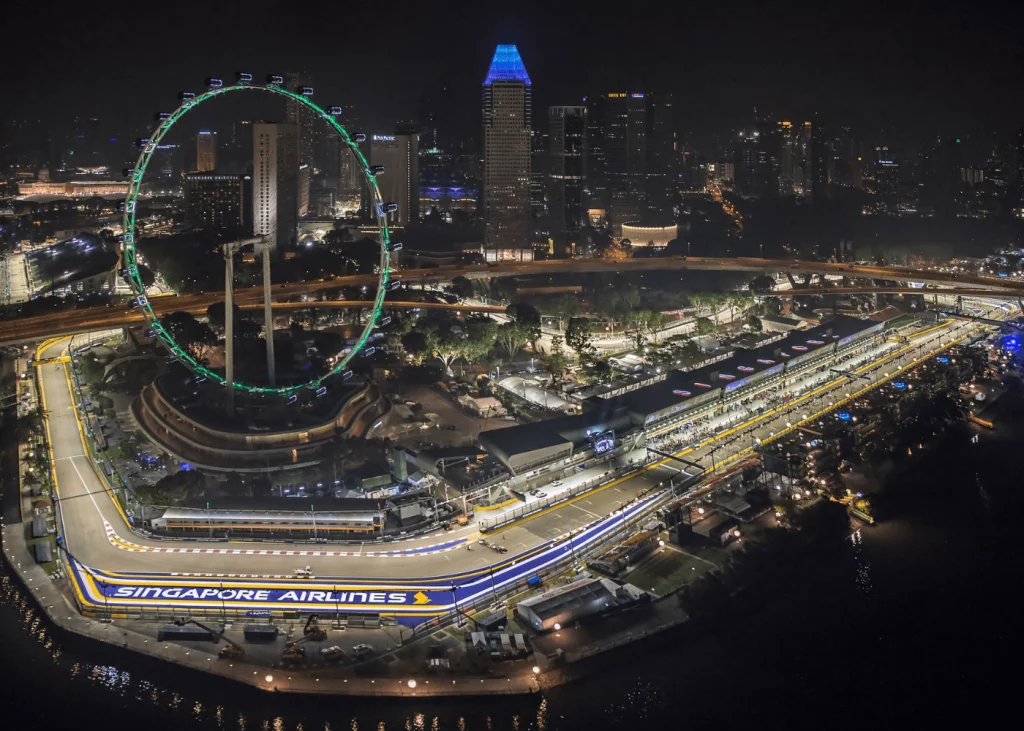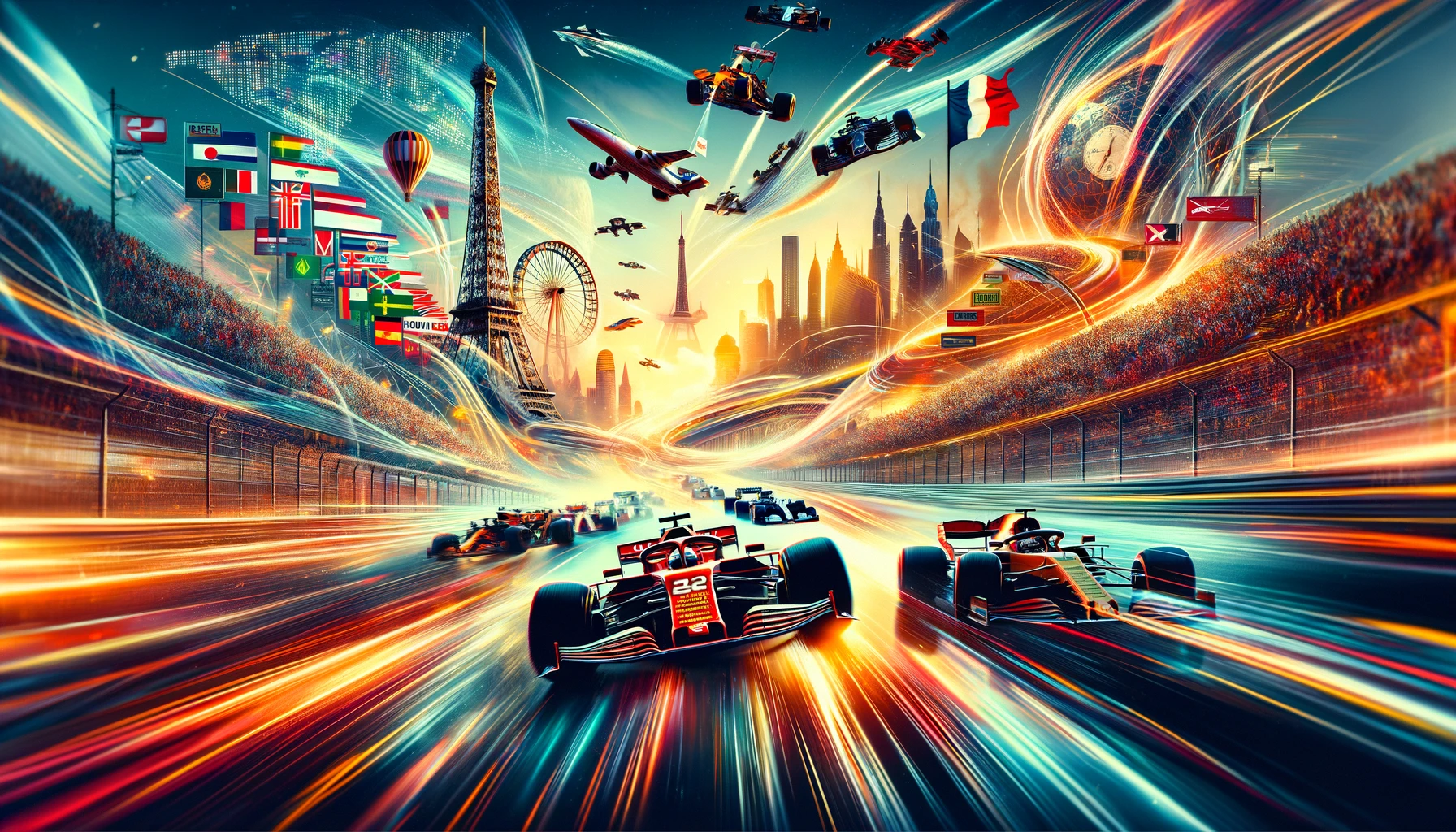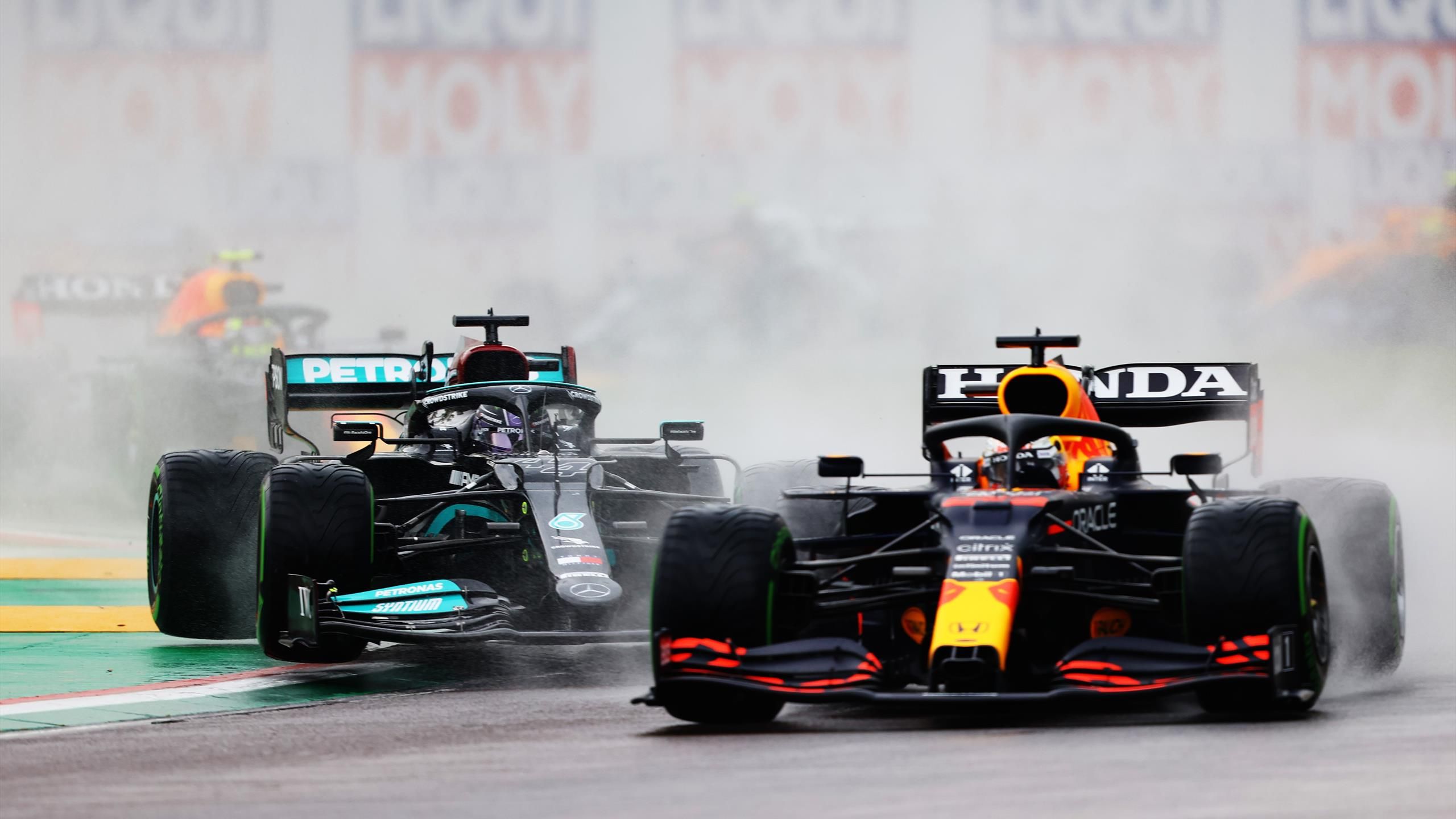
Singapore Grand Prix: Your Ultimate Guide
What is the significance of the Singapore Grand Prix in the F1 calendar?
Singapore Grand Prix, since its inception, has been a notable event in the Formula 1 calendar. Recognized for its night races, this Grand Prix offers a unique and thrilling experience for both the drivers and the spectators. A combination of street and racing circuits, the Singapore track has become one of the most challenging and exciting circuits in the F1 championship.
The race stands out not just for its nocturnal nature but also for the backdrop of the magnificent Singapore skyline. Illuminated by artificial lighting, the racetrack offers a stunning view, turning the event into a spectacle of lights, speed, and precision. For the racers, the challenge is doubled due to the humidity and the bumpy street sections that make it tough to maintain consistent speed and performance.
Moreover, the Singapore Grand Prix is strategically crucial. Falling in the latter half of the season, its results can have considerable implications for the championship standings. Many drivers and teams have often taken risks, trying to secure a strong position ahead of the concluding races.
Another notable feature of this Grand Prix is its duration. It is one of the longest races, often stretching close to the two-hour mark. The combination of its challenging track and length means that strategy becomes paramount. Teams need to consider tire choices, pit stops, and other factors meticulously.
The event is not just a race; it’s a festival. Singapore transforms into a hub of entertainment, with live concerts, events, and other festivities taking place throughout the Grand Prix weekend. This amalgamation of sports and entertainment has further elevated the Grand Prix’s status, drawing tourists from all around the world.
Lastly, the Singapore Grand Prix also has a significant economic impact. The influx of tourists, coupled with the global attention the race garners, brings considerable revenue and recognition to the city-state. All these elements combined make the Singapore Grand Prix one of the crown jewels in the F1 calendar. For a more in-depth look at the F1 races and news, check out Formula1Review.

How did the Singapore Grand Prix become the first night race in F1 history?
The introduction of the Singapore Grand Prix as the first night race was a landmark moment in Formula 1 history. The idea was novel, and the execution was challenging, but the result was nothing short of spectacular. Here’s a dive into its inception.
The Singapore Grand Prix originally made its debut in the 1960s but was discontinued due to various reasons. When it was reintroduced in 2008, the organizers wanted to give it a unique identity. The concept of a night race was floated, primarily to cater to the European television audience. The time difference meant that a day race in Singapore would be early morning in Europe, a less-than-ideal time for maximum viewership.
To transform this idea into reality, a considerable amount of planning and technology was required. The Marina Bay Street Circuit, which stretches for 5.063 km, had to be illuminated, but not just with any ordinary light. The challenge was to ensure that the lighting was consistent and replicated daylight conditions for the safety of the drivers.
With the help of specialized lighting experts, over 1600 lighting projectors were set up around the track. These lights ensured a brightness level of around 3000 lux, almost four times that of a stadium. The lights were strategically placed to minimize shadows and glare, crucial for drivers traveling at such high speeds.
Additionally, the project was environmentally conscious. Despite the high intensity of the lights, they were designed to be energy efficient, ensuring minimal wastage.
The race, being the first of its kind, presented unforeseen challenges. Drivers needed to adjust their body clocks to race at night. Teams had to alter their strategies and account for the unique conditions the night race presented, like changes in track temperature.
The inaugural night race was a massive success, with positive feedback from drivers, teams, and spectators alike. The glitz, glamour, and challenge of the race, set against the night sky of Singapore, made it an instant classic. Over the years, other circuits have experimented with night races, but the Singapore Grand Prix remains the pioneer.
What are the unique challenges drivers face while racing in the Singapore Grand Prix?
Racing in the Singapore Grand Prix is unlike any other experience in the Formula 1 calendar. The combination of its street circuit, nighttime setting, and the tropical climate of Singapore presents a set of unique challenges for the drivers.
The very nature of street circuits means they are narrower, with lesser runoff areas compared to traditional race tracks. This leaves little room for error. One slight miscalculation, and a driver could find themselves crashing into the barriers. Moreover, street circuits are bumpy due to regular road use, causing more wear and tear on the cars and making it tough for drivers to maintain consistent lap times.
Then comes the challenge of the nocturnal setting. Even with the advanced lighting system replicating daylight conditions, nighttime racing is a different beast. Drivers have to deal with different visual cues. The artificial lighting can create reflections and glares, especially in the wet conditions, which could be disorienting.
Singapore’s tropical climate adds another layer of difficulty. The city-state is known for its high humidity levels, often reaching 80-90%. This, combined with the heat from the car’s engine, makes it extremely uncomfortable for the drivers. They can lose up to 3kg of their body weight during the race due to sweating. Proper hydration and fitness become even more critical.
The duration of the Singapore Grand Prix is also a factor. It’s one of the longest races in terms of time, often nearing the two-hour limit. This tests the drivers’ endurance and concentration levels. A momentary lapse could result in a costly error.
Additionally, the track has 23 corners, one of the highest in the F1 calendar. This means frequent braking and accelerating, requiring drivers to be constantly alert and making it physically demanding. The frequent direction changes can also be hard on the neck and core muscles.
Strategically, the Singapore Grand Prix is a puzzle. The chances of safety car deployments are high due to the narrow nature of the track. Teams need to be ready to alter their strategies on the fly, making it a challenge not just for the drivers but the entire team.
In conclusion, while the Singapore Grand Prix offers unmatched spectacle and glamour, it demands the very best from the drivers, both physically and mentally. It’s a race that truly tests the limits of man and machine.

How does the Singapore Grand Prix impact the local economy?
The Singapore Grand Prix, beyond being a premier sporting event, is a significant economic driver for the city-state. Since its reintroduction in 2008, the race has brought in substantial revenues, drawing tourists, creating jobs, and enhancing Singapore’s global image.
Tourism sees a significant boost during the Grand Prix weekend. Thousands of international tourists flock to Singapore, not just for the race but for the entire experience. With concerts, events, and festivities taking place throughout the week, there’s something for everyone.
Hotels, restaurants, and local businesses experience a surge in customers. The race weekend sees hotels, especially those around the Marina Bay area, often getting fully booked months in advance. Restaurants and eateries are packed, with many of them offering race-themed menus and promotions.
The global media coverage the Grand Prix receives is another boon. With millions of viewers worldwide, Singapore gets showcased as a modern, dynamic city, capable of hosting such a massive international event. This positive portrayal can have long-term benefits, attracting not just tourists but also businesses and investors.
Local employment opportunities get a boost as well. In the lead-up to and during the race weekend, there are numerous temporary jobs created in various sectors, including hospitality, security, and event management. These job opportunities provide a short-term surge in employment figures and help in skill development of the local workforce.
Moreover, the infrastructure developed for the Grand Prix, like roads and public facilities, benefits the local population even after the race is over. Such infrastructure improvements contribute to the long-term development of the city.
However, it’s essential to note that hosting such a large-scale event does come with costs. There’s the expense of organizing the race, maintaining the track, and ensuring the city can accommodate the influx of tourists. But the benefits, both in terms of immediate economic impact and long-term branding of Singapore as a global city, far outweigh the costs.
How do teams prepare for the Singapore Grand Prix given its unique nature?
Given the distinctiveness of the Singapore Grand Prix, team preparations are intensive and differ from other races on the F1 calendar. Teams usually start preparations months in advance to ensure they’re adequately equipped to face the challenges of the Marina Bay Street Circuit.
The very nature of a street circuit means that track evolution is substantial. As the weekend progresses, the track gets faster. Teams usually bring their simulation tools and models to predict this evolution and adapt their strategies accordingly.
Tire management is a significant focus. The hot and humid conditions, combined with the bumpy street surface, can be harsh on the tires. Teams work closely with their tire suppliers to choose the right compounds that would provide optimal grip and longevity.
Given the high probability of safety car deployments, teams have to be flexible with their strategies. They prepare for various scenarios, from early pit stops to managing tire wear under safety car conditions. The strategy team is always on their toes, ready to adapt to the race’s ever-changing dynamics.
Drivers, too, undergo special preparations. They work on adjusting their body clocks to peak performance during nighttime. They also undergo heat acclimatization training to cope with Singapore’s humid conditions. This involves spending time in saunas or heat chambers to get their bodies used to the intense heat they’ll face during the race.
Simulator sessions become even more critical. Drivers spend hours on the team’s simulator, getting a feel of the track, understanding braking points, and working on their race starts. This helps them get a mental map of the circuit, crucial for a track with 23 turns.
Physical fitness is a priority. Given the race’s length and physical demands, drivers focus on endurance training. This includes cardiovascular workouts, neck exercises (to cope with the frequent direction changes), and core strengthening.
Moreover, teams also conduct extensive data analysis from previous years. This data helps in understanding tire degradation patterns, optimal race lines, and potential overtaking points.
In essence, the preparations for the Singapore Grand Prix are exhaustive. Teams leave no stone unturned, ensuring both the car and the driver are in the best possible shape to tackle the challenges of this unique race. For a more detailed breakdown on team strategies and preparations, one can visit the Formula1Review Blog.

How does the nighttime setting of the Singapore Grand Prix influence car setup and strategy?
The Singapore Grand Prix’s nighttime setting has a profound impact on car setup and strategy. Racing under artificial lights in the evening means that teams have to consider several factors that they wouldn’t necessarily need to in daylight races.
Track temperature is one of the significant considerations. While the ambient temperature remains relatively high, the lack of direct sunlight means the track surface isn’t as hot as it might be during a day race. This influences tire choices and tire pressure settings. Cooler track temperatures can lead to lower tire degradation, but getting the tires into their optimal temperature window becomes crucial.
The artificial lighting can also have an impact on a driver’s visibility. To ensure drivers get the best possible view, teams might make adjustments to the car’s visor or even the onboard camera settings. This helps in reducing any potential glare or reflections that could distract or impede a driver’s vision.
Aerodynamics is another crucial area of focus. The Marina Bay Street Circuit is a slow-speed track with many corners, so maximizing downforce is essential. Teams usually run a high-downforce setup, ensuring better grip and stability through the numerous twists and turns.
Engine and gearbox settings are tailored to the stop-start nature of the track. With 23 corners, there’s a lot of braking and accelerating. Thus, engine maps and gearbox ratios are adjusted to provide the best possible drive out of slow corners.
Brake management becomes pivotal. The frequent braking zones mean that brakes are under constant stress. Teams have to ensure optimal brake cooling while also ensuring they don’t compromise on aerodynamic performance.
Strategy-wise, teams are always on high alert due to the high probability of safety car deployments. Given the narrow nature of the track, incidents are common, leading to safety car periods. Teams have to be ready to pivot their strategies, deciding when to pit and which tires to switch to, based on race dynamics.
In essence, the unique nighttime setting of the Singapore Grand Prix, coupled with its street circuit nature, means teams have to adopt a very specific car setup and be flexible with their strategies to ensure success.
What are the safety measures in place for the Singapore Grand Prix?
Safety is paramount in Formula 1, and the Singapore Grand Prix, with its unique set of challenges, necessitates rigorous safety measures.
Firstly, the lighting system, designed to replicate daylight conditions, ensures consistent illumination around the track. The lighting system is meticulously planned to minimize shadows, ensuring drivers have clear visibility. Special attention is given to potential wet conditions. The lights are designed to minimize glare and reflections when the track is wet, ensuring the safety of drivers in case of rain.
The Marina Bay Street Circuit, despite being a street circuit, adheres to all FIA safety standards. There are ample runoff areas, especially in high-speed zones, ensuring drivers have a safe zone in case they go off track.
Tire barriers are installed at crucial points around the track. These barriers are designed to absorb the impact, minimizing potential damage to the cars and ensuring the safety of drivers.
The track is inspected multiple times before the race weekend. Any potential hazards, like loose drain covers or debris, are identified and rectified. The track’s surface is also checked for any inconsistencies or rough patches.
Medical facilities are on standby throughout the race weekend. There’s a fully equipped medical center at the track, capable of handling emergencies. In addition, medical cars and ambulances are on standby, ensuring immediate response in case of an accident.
Safety car deployments are frequent at the Singapore Grand Prix, given the track’s narrow nature. The safety car is always ready to be deployed in case of incidents, ensuring the race can be neutralized, and potential hazards are dealt with.
Lastly, drivers are briefed extensively about the track’s challenges and potential danger zones. They are informed about areas where overtaking might be risky and are given guidelines on how to handle specific sections of the track.
In conclusion, while the Singapore Grand Prix presents its unique set of challenges, the safety measures in place ensure that it adheres to the high standards of safety that Formula 1 is known for.
| Wins | Driver | Years won |
|---|---|---|
| 5 | Sebastian Vettel | 2011, 2012, 2013, 2015, 2019 |
| 4 | Lewis Hamilton | 2009, 2014, 2017, 2018 |
| 3 | Graeme Lawrence | 1969, 1970, 1971 (Formula Libre) |
| 2 | Fernando Alonso | 2008, 2010 |
How has the Singapore Grand Prix evolved over the years?
Since its inception in 2008, the Singapore Grand Prix has seen numerous changes, both in terms of track layout and its significance in the championship.
Initially, the Marina Bay Street Circuit underwent minor changes in its layout to improve overtaking opportunities and enhance driver safety. Over the years, tweaks have been made to certain corners, either to make them faster or to create more runoff areas.
In terms of championship significance, the Singapore Grand Prix has often played a crucial role in the title race. Given its placement in the calendar, it has been a race where title contenders look to consolidate their positions or make up ground. The unpredictable nature of the race, with its frequent safety car deployments and potential for rain, has made it a key battleground in multiple championship fights.
Moreover, teams and drivers have evolved in their approach to the race. Initial races saw drivers struggling with the physical demands of the circuit. However, over the years, drivers have become better prepared, both physically and mentally, to tackle the challenges of the Singapore Grand Prix.
Technology has played a significant role in this evolution. Advanced simulators allow drivers to get a feel of the track before they even set foot in Singapore. Teams use sophisticated data analysis tools to understand tire degradation patterns, fuel consumption rates, and optimal race strategies.
The event itself has grown in stature. From being a unique night race in the F1 calendar, it has become a marquee event, drawing celebrities, dignitaries, and fans from all over the world. The entertainment quotient, with concerts and events alongside the race, has ensured that the Singapore Grand Prix is not just a race but a complete entertainment package.
In essence, over the last 15 years, the Singapore Grand Prix has solidified its position as one of the crown jewels of the Formula 1 calendar. Its blend of sporting drama, entertainment, and the spectacle of racing under lights in the heart of a bustling city has ensured its iconic status in the world of motorsports.
How do drivers manage the physical and mental challenges of the Singapore Grand Prix?
The Singapore Grand Prix is often dubbed as one of the most physically demanding races on the F1 calendar. The combination of heat, humidity, and the sheer length of the race means drivers have to be at their absolute best to succeed.
Physical fitness is of paramount importance. Drivers undergo rigorous training regimes in the lead-up to the race, focusing on cardiovascular fitness, neck strength, and core stability. The frequent direction changes of the Marina Bay Street Circuit mean that a driver’s neck is under constant stress. Strength training ensures they can handle these forces without fatigue setting in.
Hydration becomes crucial. The high temperatures and humidity mean drivers can lose up to 3kg of their body weight during the race due to sweat. To counter this, drivers consume specially formulated drinks that replenish lost salts and minerals. These drinks also provide them with the necessary energy to stay sharp throughout the race.
Heat acclimatization is another area of focus. Drivers spend time in saunas or heat chambers to get their bodies used to the conditions they’ll face in Singapore. This ensures they don’t get overwhelmed by the heat during the race.
Mentally, the Singapore Grand Prix is a challenge given its 23 corners and the constant need for concentration. Any lapse can result in a crash, given the unforgiving nature of street circuits. Drivers use various techniques, from meditation to visualization, to ensure they’re mentally prepared.
Moreover, drivers also work on adjusting their body clocks. Since all sessions, including the race, are held in the evening, drivers try to live on a European time zone while in Singapore. This ensures they’re at their peak performance levels during the crucial phases of the race weekend.
In essence, managing the challenges of the Singapore Grand Prix requires a holistic approach. It’s not just about physical fitness or car setup; it’s about ensuring that both the body and mind are in harmony, ready to tackle the immense challenges that this unique race presents.
Previous Winners at the Singapore Grand Prix
| Year | Driver | Team |
|---|---|---|
| 2008 | Fernando Alonso (Spain) | Renault |
| 2009 | Lewis Hamilton (United Kingdom) | McLaren-Mercedes |
| 2010 | Fernando Alonso (Spain) | Ferrari |
| 2011 | Sebastian Vettel (Germany) | Red Bull-Renault |
| 2012 | Sebastian Vettel (Germany) | Red Bull-Renault |
| 2013 | Sebastian Vettel (Germany) | Red Bull-Renault |
| 2014 | Lewis Hamilton (United Kingdom) | Mercedes |
| 2015 | Sebastian Vettel (Germany) | Ferrari |
| 2016 | Nico Rosberg (Germany) | Mercedes |
| 2017 | Lewis Hamilton (United Kingdom) | Mercedes |
| 2018 | Lewis Hamilton (United Kingdom) | Mercedes |
| 2019 | Sebastian Vettel (Germany) | Ferrari |
| 2020 | Not held due to COVID-19 | – |
| 2021 | Not held due to COVID-19 | – |
| 2022 | Sergio Pérez (Mexico) | Red Bull-RBPT |
| 2023 | Carlos Sainz jr. (Spain) | Ferrari |
Is rain a significant factor in the Singapore Grand Prix?
Rain, or the threat of it, has always been a significant factor at the Singapore Grand Prix. Given Singapore’s tropical climate, rain showers can be sudden and intense, adding another layer of unpredictability to an already challenging race.
When it rains, the artificial lighting can cause reflections on the wet track surface, potentially hampering visibility for drivers. Teams have to be quick to adapt, switching to wet or intermediate tires based on the intensity of the rain.
Strategically, rain can turn the race on its head. Teams have to be flexible, ready to pivot their strategies based on changing conditions. The timing of pit stops becomes crucial, as does the choice of tires. A well-timed switch to or from wet tires can be the difference between winning and losing.
Moreover, the nature of street circuits means there’s limited drainage. Puddles can form on certain parts of the track, increasing the risk of aquaplaning. Drivers have to be extremely cautious, especially in the initial laps after a rain shower, as they gauge the track’s conditions and identify potential danger zones.
Safety car deployments become more frequent in wet conditions. The narrow confines of the Marina Bay Street Circuit mean that incidents are more likely in the rain, necessitating the safety car’s deployment.
In conclusion, while rain adds an element of drama and unpredictability to the Singapore Grand Prix, it also heightens the challenge for teams and drivers. Being able to adapt to changing conditions, making the right strategic calls, and ensuring driver safety become paramount in such scenarios.
How do the teams transport their equipment to the Singapore Grand Prix?
Transporting equipment to any Formula 1 race is a logistical challenge, and the Singapore Grand Prix is no different. Given the global nature of the sport, teams have to ensure that all their equipment, from cars to spare parts and even pit wall equipment, reaches the venue safely and on time.
Typically, sea freight is used for equipment that’s not immediately required. Items like hospitality equipment, garage setups, and some spare parts are shipped well in advance, given the longer transit times of sea freight.
Air freight is reserved for crucial equipment. The cars themselves, along with essential spare parts, tools, and pit stop equipment, are transported by air. Formula 1 has partnered with specific logistics companies that specialize in handling such sensitive and high-value cargo.
Once the equipment reaches Singapore, it’s transported to the Marina Bay Street Circuit using trucks. Given the city’s compact nature, this phase of transportation is relatively straightforward. Teams coordinate with local authorities to ensure smooth transit, with minimal disruptions.
Timing is crucial. Teams have a narrow window between races, especially when there are back-to-back race weekends. The logistics team works round the clock, ensuring equipment is packed, transported, unpacked, and set up in the shortest time possible.
In essence, transporting equipment to the Singapore Grand Prix is a blend of meticulous planning, coordination, and execution. It’s a testament to the behind-the-scenes efforts that go into ensuring everything is in place for race weekend.
Why is the Singapore Grand Prix considered a marquee event in the F1 calendar?
The Singapore Grand Prix has, over the years, established itself as a marquee event in the Formula 1 calendar. Several factors contribute to its elevated status.
Firstly, it’s the spectacle of racing under lights. The Singapore Grand Prix was the first-ever night race in Formula 1 history. Racing under artificial lights, with the city’s skyline as a backdrop, provides a visual treat unlike any other race.
The track layout itself, winding through the streets of Singapore, offers a unique challenge. Street circuits are always special in F1, given their unforgiving nature. A minor mistake can result in a crash, making every lap a test of a driver’s skill and concentration.
Singapore’s strategic location and its status as a global hub also play a part. The race draws fans from across the Asia-Pacific region, making it a melting pot of cultures and a truly international event.
The entertainment factor is significant. The Singapore Grand Prix is not just about the race; it’s a week-long festival. From concerts featuring global music stars to events and parties, there’s something for everyone.
Lastly, the unpredictable nature of the race, with its potential for safety car deployments, strategy shake-ups, and changing weather conditions, ensures that it’s always a talking point in the championship battle.
All these factors combined have ensured that the Singapore Grand Prix is not just another race on the calendar but an event that’s eagerly anticipated by fans, teams, and drivers alike.








